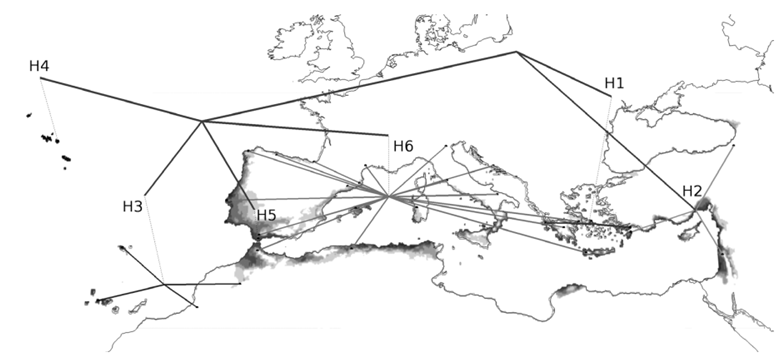How climate change wiped out European laurel forests, and how some species managed to survive

Although global warming is currently threatening biodiversity, we know from past records that cooling periods can also be disastrous in terms of extinction rates. During the Eocene, about 50 million years ago, the Earth was so warm that there were no permanent ice caps in the poles, and warm-loving subtropical species thrived at quite high latitudes. Most of Europe was covered by evergreen subtropical vegetation rich in Lauraceae, Myrtaceae, Vitaceae and Arecaceae. A long process of climatic cooling, later followed by aridification, provoked the southwards retreat and final extinction of most species. Only a few taxa managed to survive until today. For instance, of 17 genera of Lauraceae recorded in the fossil record in Europe, only one (Laurus) avoided extinction, surviving at the Mediterranean basin and Macaronesia (Atlantic islands).
The climate-driven demise of European laurel forests, and the history of Laurus as an emblematic survivor, had surprisingly remained largely unexplored. Most information came from the fossil record, whose fragmentary nature prevented an accurate reconstruction of the migration routes and last refugia of these species. Furthermore, it had not yet been answered how Laurus managed to survive in largely unsuitable climates, whilst the other Lauraceae became extinct. This knowledge have obvious implications for understanding better the fate of species confronted with climate change.
In a book chapter recently published by Cambridge University Press, we provide an updated synthesis of the history of laurel forests in the western Palearctic, and integrate evidences from the fossil record, phylogeography and palaeodistribution modelling to better understand Laurus range dynamics in the last million years. Each of these sources of information provide only an incomplete and partially biased picture of what really happened, thus their integration is critical in order to obtain an accurate reconstruction of the past. In brief, we found that Laurus, like many other tree species, showed apparently little adaptive response to climate change, but persisted thanks to the presence of scattered suitable refugia along the Mediterranean basin and Macaronesia. In contrast, other Lauraceae seem to have had more strict climatic requirements, which were no longer fulfilled in the Plio-Pleistocene.
The investigation of the factors that determine adaptation to climate change, as well as climate-driven range shifts, is currently an active area of research. As shown in the case of laurel forests, key insights will come from the integration of diverse disciplines and sources of data. This will help to better understand the past as well as, hopefully, improve our ability to foresee the future.